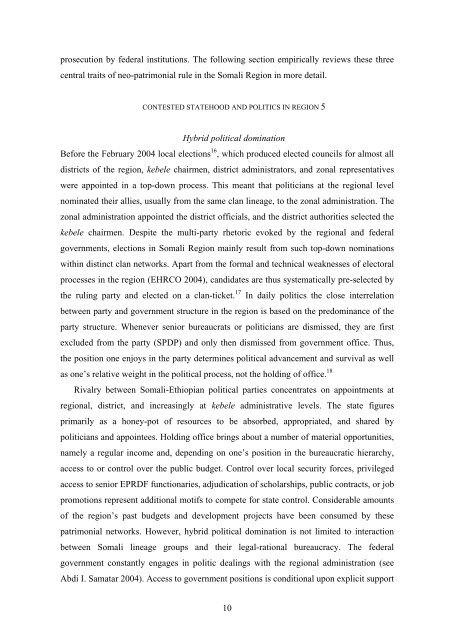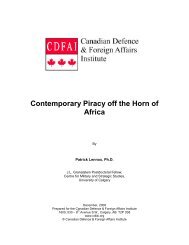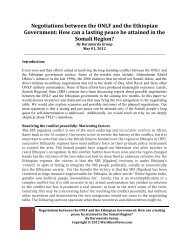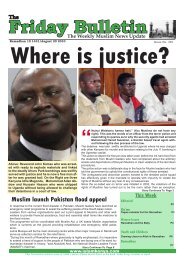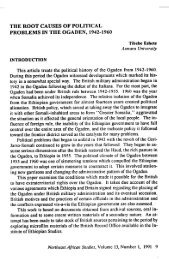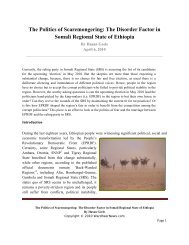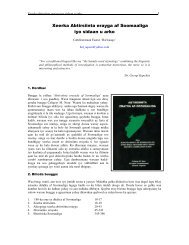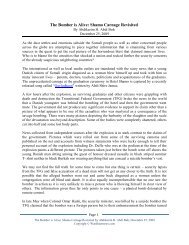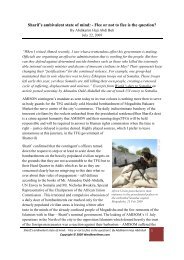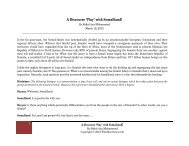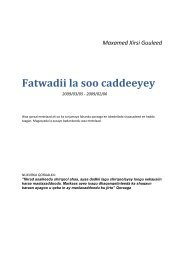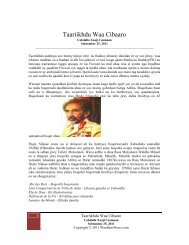View - WardheerNews
View - WardheerNews
View - WardheerNews
You also want an ePaper? Increase the reach of your titles
YUMPU automatically turns print PDFs into web optimized ePapers that Google loves.
prosecution by federal institutions. The following section empirically reviews these three<br />
central traits of neo-patrimonial rule in the Somali Region in more detail.<br />
CONTESTED STATEHOOD AND POLITICS IN REGION 5<br />
Hybrid political domination<br />
Before the February 2004 local elections 16 , which produced elected councils for almost all<br />
districts of the region, kebele chairmen, district administrators, and zonal representatives<br />
were appointed in a top-down process. This meant that politicians at the regional level<br />
nominated their allies, usually from the same clan lineage, to the zonal administration. The<br />
zonal administration appointed the district officials, and the district authorities selected the<br />
kebele chairmen. Despite the multi-party rhetoric evoked by the regional and federal<br />
governments, elections in Somali Region mainly result from such top-down nominations<br />
within distinct clan networks. Apart from the formal and technical weaknesses of electoral<br />
processes in the region (EHRCO 2004), candidates are thus systematically pre-selected by<br />
the ruling party and elected on a clan-ticket. 17 In daily politics the close interrelation<br />
between party and government structure in the region is based on the predominance of the<br />
party structure. Whenever senior bureaucrats or politicians are dismissed, they are first<br />
excluded from the party (SPDP) and only then dismissed from government office. Thus,<br />
the position one enjoys in the party determines political advancement and survival as well<br />
as one’s relative weight in the political process, not the holding of office. 18<br />
Rivalry between Somali-Ethiopian political parties concentrates on appointments at<br />
regional, district, and increasingly at kebele administrative levels. The state figures<br />
primarily as a honey-pot of resources to be absorbed, appropriated, and shared by<br />
politicians and appointees. Holding office brings about a number of material opportunities,<br />
namely a regular income and, depending on one’s position in the bureaucratic hierarchy,<br />
access to or control over the public budget. Control over local security forces, privileged<br />
access to senior EPRDF functionaries, adjudication of scholarships, public contracts, or job<br />
promotions represent additional motifs to compete for state control. Considerable amounts<br />
of the region’s past budgets and development projects have been consumed by these<br />
patrimonial networks. However, hybrid political domination is not limited to interaction<br />
between Somali lineage groups and their legal-rational bureaucracy. The federal<br />
government constantly engages in politic dealings with the regional administration (see<br />
Abdi I. Samatar 2004). Access to government positions is conditional upon explicit support<br />
10


